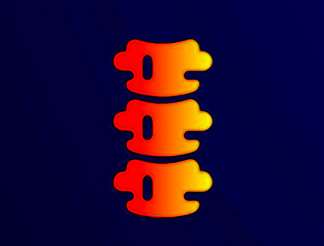Gluteal Tendinopathy
ProActive Life Physio: Effectively Managing Gluteal Tendinopathy
Understanding Gluteal Tendinopathy
Discover the best strategies for managing gluteal tendinopathy, a condition marked by pain and tenderness along the hip’s side. Also known as greater trochanteric bursitis or lateral hip pain, this condition is more prevalent in females, particularly in middle age (Segal et al. 2007).
Recognizing the Symptoms
Gluteal tendinopathy manifests as a persistent ache or bruise on the hip’s side, often at its peak in the morning. Diagnosis involves a physiotherapy assessment, confirmed through ultrasound or MRI scans revealing degenerative tears in the gluteus medius, gluteus minimus, and possible bursitis.
Activities and Factors Contributing to Pain
Activities triggering lateral hip pain are often associated with compressive forces or sudden increases in tendon load. Compressive forces occur when the hip is adducted, increasing stress on the iliotibial band (ITB) and overloading the gluteal tendon. Activities like side sleeping, walking upstairs, sitting with crossed legs, and standing with a hitched hip may provoke pain.
Anatomical, Biomechanical, and Load-Related Factors
Several factors, including a wide Q-angle (hip angle), biomechanics, and sudden load increases, contribute to lateral hip pain. Maintaining a neutral hip position during activities requires adequate gluteal strength. Corrective exercises targeting gluteal strengthening have shown positive long-term outcomes (Mellor et al. 2018).
Individualized Physiotherapy Assessment
Understanding the specific reasons behind gluteal tendinopathy requires an individualized physiotherapy assessment. This ensures addressing all contributing factors and tailoring rehabilitation to the root cause. Differential diagnosis is crucial to rule out other causes of lateral hip pain, such as lower back referred pain.
Tips for Tendon Care
Reduce compressive forces on the gluteal tendon with these tips:
- Standing Posture: Maintain a neutral hip position, avoiding hip hitching. Distribute weight evenly, and keep feet hip-distance apart.
- Sleeping Position: Use a thick pillow between knees during side sleeping to prevent compression. Consider sleeping on your back if pain is severe.
- Sitting Positions: Sit with knees at hip distance and feet on the floor, avoiding crossing legs to prevent adduction.
- Stay Active: Regular exercise is essential, as gluteal tendinopathies benefit from ongoing load. Progressive gluteal strengthening is key for long-term management.
FAQs about Lateral Hip Pain
- Pain during Side Lying: Refer to tip 2 for optimal sleeping position. If possible, try sleeping on your back.
- Morning Pain: Morning pain is common and typically improves within 15 minutes of movement.
- Hip Bursitis: Often coexists with gluteal tendinopathy. Physiotherapy assessment helps create a tailored management plan.
- Corticosteroid Injections: Reserved for extremely inflammatory cases. Conservative therapy is recommended before considering injections.
- Exercise vs. Rest: Keep moving! Resting too much may lead to deconditioning and muscle loss.
- Specific Exercises: Physiotherapists will guide you through progressive strength exercises based on the underlying cause.
At ProActive Life Physio, we specialize in effective management strategies for gluteal tendinopathy. Our personalized approach ensures a thorough understanding of your unique situation. Reach out to us for comprehensive care and guidance.
How We Can Help?
You can always BOOK ONLINE to see one of our experienced Physiotherapist or simply Call ProActive Life Physio to schedule a time that suits you.
We’ll help you find the right solution to alleviate your symptoms.
